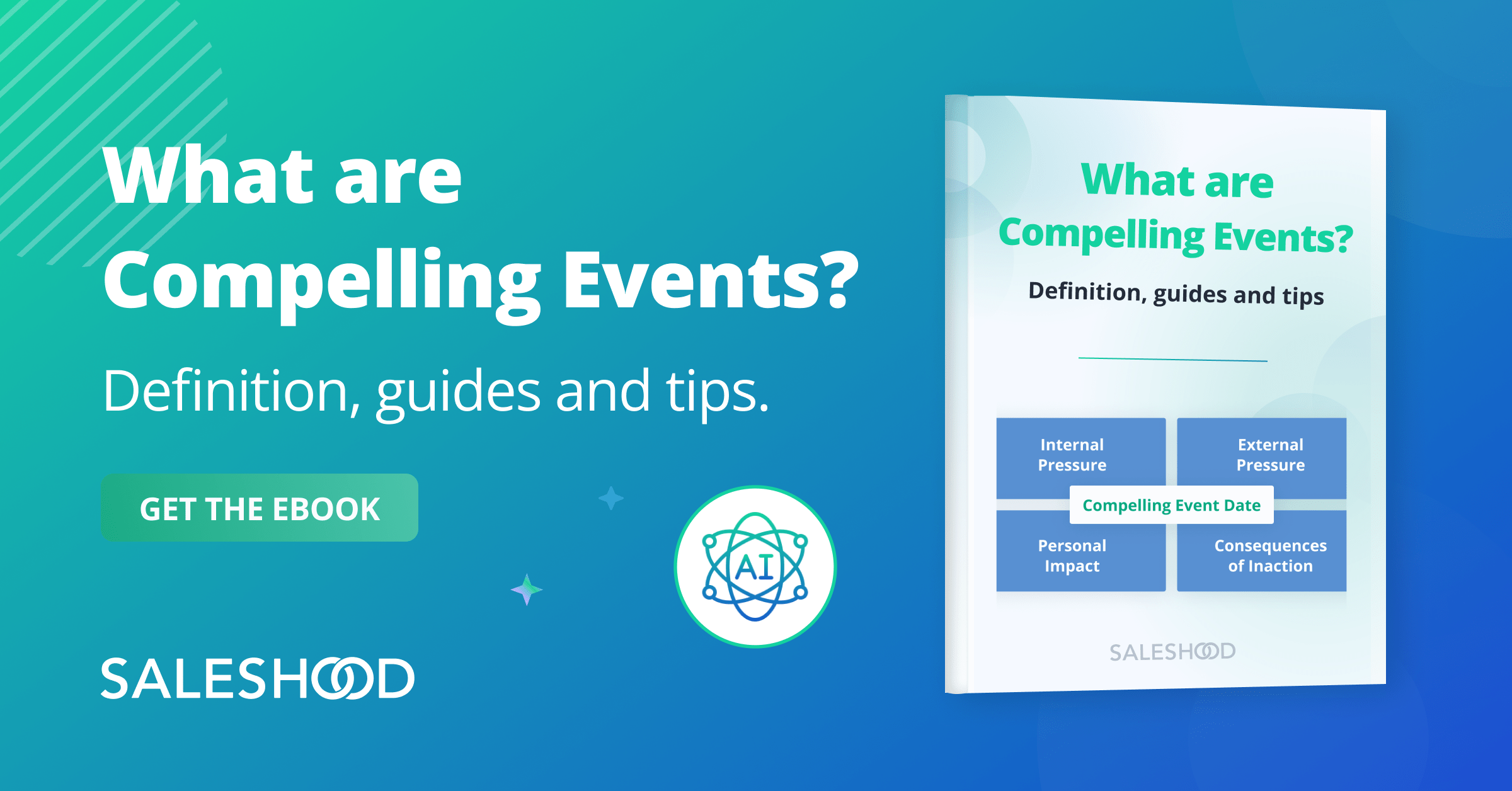Sales methodologies come in many shapes and sizes. Each has its own theory behind it, approach to selling, and pros and cons–and the Challenger Sales Model is no different.
Many sales strategies used today revolve around the belief that the role of sellers has changed to a collaborative role instead of a traditional salesperson. They emphasize building positive relationships with buyers and facilitating self-discovery to guide buyers toward choosing their solutions. Some examples include SPIN Selling and the Sandler Pain Funnel.
On the other side of the spectrum are methodologies like the Challenger Sales Model. These authority-focused strategies return salespeople to traditional roles as deal leaders who take control of the sales conversation to close deals. It’s not for everyone, but if your sales team can make it work, it’s often highly effective.
Keep reading to learn more about the Challenger Sales Model, whether it’s right for your sales team, and how reps can become Challengers more easily with Digital Sales Rooms (DSRs).
What is the Challenger Sales Model?
The Challenger Sales Model is a sales methodology designed to help sales professionals take control of complex sales situations by challenging buyers’ perspectives. Challengers offer unique insight that buyers haven’t considered themselves, explains why they need your business’s products and services, and convinces them to take action.
This methodology was modeled after the traits of top-performing salespeople who participated in a 6,000-person study. The results found that confident, informed salespeople who challenged buyers achieved the best results. Matthew Dixon and Brent Adamson published their findings in The Challenger Sale: Taking Control of the Customer Conversation.
According to the book, the Challenger approach is based on the three T’s:
- Teach: They must provide valuable information demonstrating their understanding of buyers’ businesses to add credibility and value to their recommended solution.
- Tailor: Challengers need to adapt their sales pitches to the specific problems, use cases, and value propositions that matter to buyers.
- Take control: Reps steer the conversation towards key talking points and value propositions that their products offer, proactively solving buyers’ problems rather than waiting for them to ask.
When compared to other methodologies, the Challenger Sales Model is a pitch-focused, more aggressive approach to sales that requires more talking and less listening than other methodologies. As a result, reps must establish themselves as experts worthy of listening to, which requires in-depth research before starting the conversation.
Challengers should research:
- Industry trends and challenges: Consider market dynamics, economic factors, and regulations that buyers need to be wary of and comply with to ensure that offered solutions are future-proof and compliant.
- Specific business information: Learn about the buyer’s specific business, including its goals, where it stands in market share, and what competitors are doing better than them to increase the pitch’s impact.
- Other competitors being considered: Look into alternatives that buyers are considering to help reps highlight unique advantages that act as a selling point to make your solution stand out.
- Factors in purchasing decisions: Understand how decisions are made in the buyer’s organization, including priorities and key stakeholders, to help address objections and target the right individuals.
Armed with this knowledge, Challengers can build a narrative and plan the structure of their sales pitch to be as efficient, tailored, and convincing as possible to drive more wins.
What are the benefits and downsides of the Challenger Sales Model?
The Challenger Model is just one of the many methodologies that sales teams use to win more deals. Just like any other approach, it excels in some cases and falls flat in others. What’s right for one business may not be right for you, so it’s important to consider where each methodology excels before committing to one for your sales team.
Here are the benefits and negatives of the Challenger Sales Model to help you determine whether it’s right for your organization.
Challenger Sales excels at:
- Navigating complex buying decisions: Large and complicated deals can be hard to make progress on. Between multiple decision-makers and different goals and needs, buying teams often have a hard time prioritizing and making decisions. Fortunately, Challengers can take control of the conversation to help align everyone’s goals, show how they can achieve them with the rep’s solution, and urge them to take action as quickly.
- Standing out from competition: Buyers often come to sales teams with problems to solve. However, they don’t always have the full picture. With the Challenger Sales Model, Challengers can unveil and resolve new problems with their solutions to help stand out while competitors only address the visible problems.
- Driving customer action: Many sales strategies allow buyers to progress at their own pace, leading to longer deal cycles and wasted time. By challenging objections and introducing new reasons to find a solution, reps can create a sense of urgency that creates well-informed decisions.
However, Challenger Sales struggles with:
- Relying heavily on skilled salespeople: While it’s true that reps can become Challengers, it’s not easy. It takes a lot of experience and effective training. They need to be able to walk a thin line between confrontation and debate, understand a wide range of buyer profiles, tailor their pitch to fit changing demands, and formulate valuable insights based on their research to demonstrate value and expertise to buying teams.
- Coming across as aggressive: The last thing you want is for sales reps to lose deals because they made customers feel alienated by pushing too hard or acting overly aggressive. Not everyone appreciates being challenged, so emotional control and de-escalation skills are essential.
- Not applying to all industries: Challenger Sales thrive in complex environments where there are various factors to consider when finding the ideal solution. However, not every industry or deal type has that depth to it, and some buying teams value relationships more than others, making Challengers’ unique skills less effective for some deals.
Using these pros and cons, consider what’s most important to your sales team’s success and whether you’re the right fit for the Challenger Sales Model.
How to employ the Challenger Sales Model
Now that you know what a Challenger Sales Model can do, you need to know how your sales team can put it to use.
There are five key stages to the Challenger Sales Model: Warm-up, Reframe, Emotional Connection, Value Proposition, and Solution. Each stage strategically guides buyers towards taking action and closing the deal, but they can take a lot of work to complete successfully.
Warm-Up
Challengers need to have knowledge and expertise about their buying teams, their needs and challenges, and how to stand out from the other options they’re considering.
At this stage, reps learn everything they can about the buyer and their industry so they can add valuable insights and debate effectively when obstacles and objections arise. They must become experts in the buyers’ eyes and show that they’re committed to achieving the best buyer outcomes.
Reframe
Most buying teams come into the conversation with problems to solve and a solution in mind. However, as part of being an expert on the business and industry, agents must challenge their understanding and expectations to open their mind to solutions outside of what they expected. Challengers can do so by highlighting facts or statistics, referencing how buyers’ competitors are tackling their problems, and explaining what an ideal solution can do for them.
Emotional Connection
Once buyers have broken free of the expectations and understand the stakes, it’s time to push on their pain points and utilize their emotions to push them closer to making a decision.
Challengers can weave customer success stories or case studies relating to the problems the buyers are facing to show that it’s possible and worthwhile to overcome their challenges. It also helps to highlight the consequences of not finding a solution as a financial motivator.
Value Prop
The previous step established the stakes and consequences of not resolving their problems immediately. Now, it’s time for Challenges to explain the benefits of choosing their solution and help them visualize a better future.
At this stage, reps shouldn’t push specific products yet. They should focus on addressing all the primary pain points and explaining how solving them will help until the buyers practically sell themselves on whatever solution the rep provides next.
Solution
The last step of the Challenger Sales Model process is offering a specific solution. The previous steps should have made it easy to convince the buying team to take the next steps. But, to be safe, reps should revisit the problems being solved, the benefits of solving them, and how their solution aligns with the buying team’s goals. They should also be ready to answer new questions that arise.
Once a decision has been made, Challengers can begin outlining the next steps with mutual action plans and providing the necessary resources or information to take them. Some of these steps may include personalized demos, starting trials, sending pricing information, or signing agreements.
How to develop Challenger sales professionals
According to the Challenger Sales Model, sales professionals typically fall into one of five categories: the Relationship Builder, the Hard Worker, the Lone Wolf, the Problem Solver, and the Challenger.
While each type has its strengths and weaknesses, Dixon and Adamson argue that with the right training and resources, any sales rep can be transformed into a Challenger.
Here’s how.
Relationship Builder
Relationship builders implement the collaborative sales strategies, working to build strong personal connections that paint them as a trusted advisor. Their goal is long-term relationships and customer satisfaction that drive returning sales and referrals.
These sellers struggle with challenging customers’ assumptions or taking control of the conversation over fear of damaging the relationship or coming across as too ‘sales-y.’
You can turn relationship builders into Challengers by encouraging them to conduct more research before conversations so they can introduce unique perspectives that make buyers think. They should also become more comfortable in a traditional salesperson role as a seller, not a friend.
Hard Worker
For hard workers, doing more work to close deals compensates for their lack of creativity. They follow their traditional training and procedures closely, struggling to deviate from them to tailor their sales pitch to each individual buyer.
You can turn hard workers into Challengers by providing them with the appropriate training, resources, feedback, and flexibility they need to become confident, creative problem-solvers. It would also help to roleplay with different buyer profiles so they can practice tailoring their pitch based on what they learn from researching buyers.
Lone Wolf
Lone Wolves are confident, high-performing sales reps who don’t play well with others. It’s hard to argue with their results, but they have a habit of frustrating team members, managers, and sometimes even leads when they push too hard.
They may also be prone to improvisation and resist existing sales strategies and methodologies in favor of what they believe works best. It’s difficult to implement a team-wide Challenger model if some reps don’t want to buy in.
You can turn lone wolves into Challengers by showing them what they’re capable of when utilizing the most effective strategies. You can also focus training on using that drive to develop rock-solid insights and value props for each buyer that make it hard to say no to them.
Problem Solver
Problem solvers are great listeners who take note of every question, comment, and concern buyers have. Their goal is to provide a complete solution that checks every box, but they’re too focused on the problems that buyers have identified, not the ones unknowns they really need to solve, making it hard to stand out.
You can turn problem solvers into Challengers by having them think more for themselves. Teach them to consider the greater implications of the problems instead of their immediate solutions to help establish more pain points and drive action by teaching buyers what they really need.
Challenger
Challengers are the teachers who aren’t afraid to be salespeople. They spend time preparing for the deal so they can assume the role of the expert in conversations, pushing buyers to take action. They’re comfortable talking about finances and focus on providing additional value to their buyers through their understanding of each buyer’s needs and the insights they’ve developed.
However, being a Challenger requires careful control over emotions and the awareness to not push too hard. Plus, some buyers may not respond well to being challenged, which requires them to be adaptable as well.
Empower the Challenger Sales Model with Digital Sales Rooms
The Challenger Sales Model is a complex approach that asks a lot from the agents implementing it. They must be able to communicate effectively to challenge points, share content and insights to establish their expertise, and make it easy for buying teams to take action.
If you want your reps to effectively implement the Challenger approach in their deals, they need the right tools. Fortunately, using the Challenger Sales Model within a Digital Sales Room (DSR) can be an effective way to engage prospects and guide them through the sales process.
Digital Sales Rooms are interactive sales environments that allow reps to share content, communicate with buyers, and monitor engagement to gain valuable insights they won’t get elsewhere. As a centralized microsite, every stakeholder can access the information on demand and reps can use built-in tools to create personalized content that’s essential for complex B2B deals.
The Challenger Sales Model emphasizes teaching, tailoring, and taking control of the sales conversation, which can be seamlessly integrated into the capabilities of a Digital Sales Room.
Here’s how to combine them together:
1. Teach for differentiation
- Content sharing: Use the DSR to share educational content that challenges the prospect’s status quo. This could include industry insights, case studies, white papers, and videos that highlight the unique value proposition of your solution.
- Custom playbooks: Create tailored playbooks within the DSR that align with the specific pain points and goals of the prospect, showcasing how your solution can address their unique challenges.
2. Tailor for resonance
- Personalized experiences: Leverage the DSR to customize the sales experience. Provide personalized dashboards, proposals, and content that directly resonate with the prospect’s industry, role, and specific needs.
- Engagement tracking: Use the analytics features of the DSR to track which content the prospect engages with the most. This data can help you tailor your follow-up conversations to focus on the areas that matter most to them.
3. Take control of the sale
- Guided journey: Design the DSR experience to guide the prospect through a well-defined sales journey. Use mutual action plans (MAPs) to outline the steps needed to close the deal, setting clear expectations and timelines.
- Proactive follow-up: Use the DSR’s notifications to stay on top of the prospect’s activity, allowing you to follow up promptly and keep the momentum going. If you notice any hesitations or delays, address them directly and confidently.
4. Building consensus
- Collaborative space: The DSR can serve as a collaborative space for all stakeholders involved in the decision-making process. Use it to bring multiple decision-makers into the conversation, ensuring everyone is aligned and engaged.
- Q&A and feedback: Encourage prospects to ask questions and provide feedback directly within the DSR. This allows you to address concerns in real time and demonstrate your expertise.
5. Leveraging technology for efficiency
- Automation and AI: Utilize the DSR’s automation features to send timely, relevant content based on the prospect’s engagement level. AI-driven insights can also help identify when a prospect is ready to move to the next stage of the sales process.
- CRM integration: Integrate the DSR with your CRM to ensure all interactions and data are seamlessly captured and used to refine your sales strategy.
By combining the Challenger Sales Model with the advanced features of a Digital Sales Room, you can create a more effective, engaging, and efficient sales process that not only educates and challenges your prospects but also guides them toward a successful purchase decision.
Simplify buying decisions with the Challenger Sales Model
The Challenger Model is a unique approach to sales. In an industry where everyone’s trying to make friends, Challengers care more about achieving the best results for buying teams, and they’ll work hard to make it happen.
If your team is struggling to close large, complex deals, consider training Challengers to help simplify and streamline buying decisions. With their unique set of skills, they can take control of the sales process, provide valuable insights that unveil new problems and solutions for buying teams, and guide buyers to the solution they actually need, not the one they think they need.
With Challengers on your team, closing B2B deals becomes less of a challenge.



